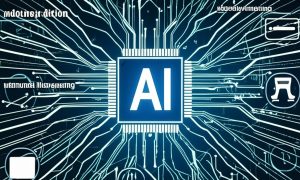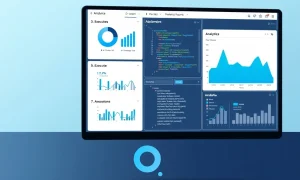Have you noticed doctors spending more time typing than talking to patients? You’re not alone. Administrative tasks consume nearly half of physicians’ workdays. Fortunately, AI scribes now offer a transformative solution. These intelligent systems revolutionize how healthcare professionals manage documentation.
How AI Scribes Reduce Administrative Burden
Healthcare providers face overwhelming paperwork demands. Consequently, doctors spend approximately 50% of their time on documentation. This administrative overload reduces patient interaction time significantly. However, AI scribes dramatically change this dynamic. They automatically convert doctor-patient conversations into accurate medical notes. Research shows these systems can cut documentation time by up to 70%. Therefore, physicians regain valuable time for actual patient care.
Enhancing Patient Experience with AI Technology
Patient-doctor relationships suffer when physicians focus on computers. Patients often feel ignored during appointments. Importantly, AI scribes enable doctors to maintain eye contact and active listening. They eliminate the need for constant typing during consultations. Consequently, patients receive more personalized attention. This technology fosters stronger connections and improved satisfaction. Many physicians report feeling more engaged with their patients.
Improving Medical Accuracy and Efficiency
Manual documentation often leads to errors. Even small mistakes can cause serious consequences. Traditional note-taking becomes challenging during busy shifts. However, AI scribes capture medical details with remarkable precision. They ensure complete and updated records in real-time. Studies indicate these systems reduce documentation errors by up to 90%. This improvement leads to safer patient outcomes. Additionally, care teams experience smoother communication.
The Future Evolution of AI Scribes
Current AI scribes already handle most documentation tasks. Future developments promise even greater capabilities. Next-generation systems will integrate directly with electronic health records. They may suggest treatment options using predictive analytics. Furthermore, these tools could identify potential health risks earlier. As AI technology advances, its healthcare role will expand beyond documentation. Ultimately, these systems will become essential decision-support tools.
Key Benefits of Implementing AI Scribes
- Time savings: Reduces documentation time by 70%
- Improved accuracy: Cuts errors by 90%
- Enhanced patient care: Allows more face-to-face interaction
- Better workflows: Streamlines medical record keeping
Conclusion: The Transformative Impact of AI Scribes
AI scribes fundamentally change healthcare delivery. They reduce administrative burdens dramatically. Consequently, doctors regain time for meaningful patient interactions. These systems improve medical accuracy significantly. They also enhance overall patient experiences. The technology represents more than just convenience—it transforms healthcare dynamics. For medical professionals seeking better work-life balance, AI scribes offer substantial benefits. They represent the future of efficient, patient-centered care.
Frequently Asked Questions
What exactly are AI scribes?
AI scribes are artificial intelligence systems that automatically transcribe and document medical conversations between doctors and patients. They convert spoken dialogue into structured clinical notes.
How do AI scribes improve patient care?
These systems allow physicians to maintain eye contact and focus completely on patients during appointments. This leads to better communication, improved diagnoses, and stronger doctor-patient relationships.
Are AI scribes secure for handling patient information?
Reputable AI scribe systems employ advanced encryption and comply with HIPAA regulations. They maintain strict confidentiality standards for all medical information.
Can AI scribes integrate with existing medical record systems?
Most modern AI scribe solutions seamlessly integrate with popular electronic health record platforms. They automatically populate patient charts without requiring manual data entry.
What’s the typical implementation time for AI scribes?
Implementation usually takes 2-4 weeks, including system integration, staff training, and workflow adjustment. Most practices see immediate documentation time reductions.
Do AI scribes require special hardware or equipment?
Most systems work with existing computers and microphones. Some advanced solutions use specialized recording devices for optimal audio capture in clinical environments.






















